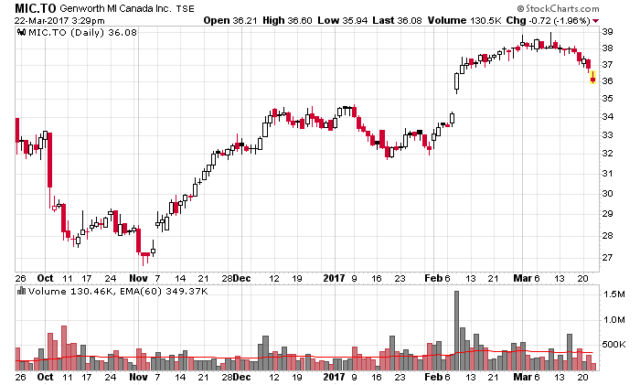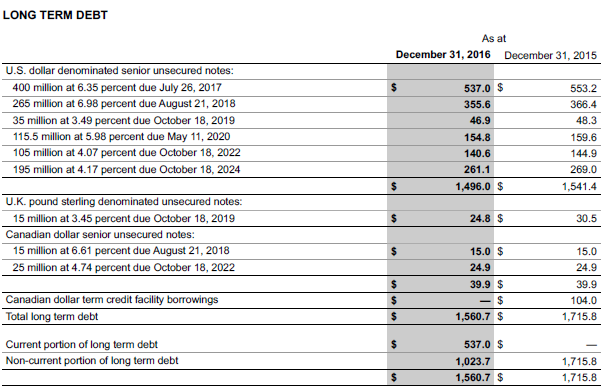The Q1-2017 report is going to be shockingly positive. Genworth MI (TSX: MIC) used to be my largest holding, but I have trimmed the position (mainly for diversification and deleveraging reasons). It still is a decent size of the portfolio, but not as prominent as it used to be.
My largest position after Genworth MI was KCG Holdings (NYSE: KCG).
Yesterday, near the close of trading, they confirmed that they received an unsolicited takeover proposal of US$18.50-20.00 per share from Virtu (Nasdaq: VIRT), another (very credible) high frequency trading firm. KCG did not file with the SEC.
Virtu filed 8-K with the SEC confirming they “made a preliminary, non-binding proposal to acquire KCG”.
Both entities have been quite silent otherwise. There is likely a lot of backroom jockeying going on.
KCG’s stock shot up from about $13.60 a share to $18/share today on over 6 million shares of volume. The company has about 66.4 million shares outstanding, and Jefferies (a wholly owned subsidiary of Leucadia (NYSE: LUK)) owns 15.41 million shares, and insiders own another 3 million shares, leaving a float of about 48 million shares that can be actively traded. 6.65 million shares traded today and suffice to say there is quite a large amount of speculation about what is going to happen.
My take on the matter is the following (in no particular order):
1. Tangible book value of KCG Holdings is $18.71/share as reported in their 10-K filing. A US$18.50 takeover price would allow Virtu to effectively take over KCG for free. This is the primary reason why I wouldn’t think this takeover would go anywhere as-is. My guess is that if Virtu was serious they would have to offer some equity as well, or some sort of premium to book value.
2. Virtu is a logical strategic acquirer to KCG – the synergies are quite obvious to both businesses. There might even be anti-trust issues with this acquisition.
3. Even though the acquisition at the low price range would be “free” for Virtu, it leaves the question of how they would immediately finance it.
4. The Jefferies control block is vital to the situation – if they can be persuaded to sell out, then management will likely have to follow. The question is whether they are motivated to sell out or not – obviously they will at the right price, but US$18.50 is too low.
5. The CEO was granted a huge amount of options at $22.50/share (priced well out-of-the-money at the time of the grant) and probably doesn’t have much of an incentive at this point to selling out the company for cheap.
6. Operationally, KCG is treading water in terms of cash flow, but this is because of unprecedented low market volatility conditions that is practically the worst environment for the firm (and also Virtu). In more normal conditions, one could easily estimate a value of US$25-30/share for the firm which is where I think management is targetting. They’ll probably sell out at 24ish if the bid got there.
7. Who leaked this unsolicited offer? Obviously KCG did – probably trying to drum up any counter-proposals out there as there are some other financial institutions that would be interested in acquiring the business. Perhaps management knows the end-game is nearing and this was a last ditch attempt to prevent a forced merger.
The decision forward is a high-stakes game for a lot of participants!
Disclosure: I own common shares of KCG, call options, and also their senior secured debt. Sometimes you really do hit the lottery in the marketplace.

